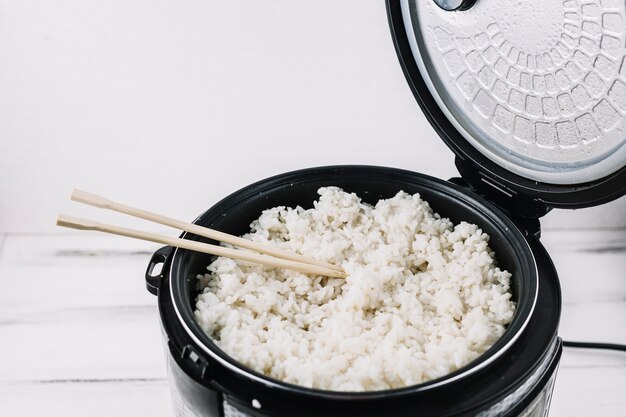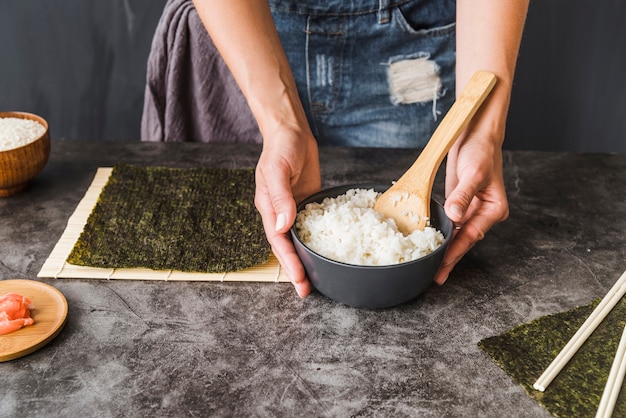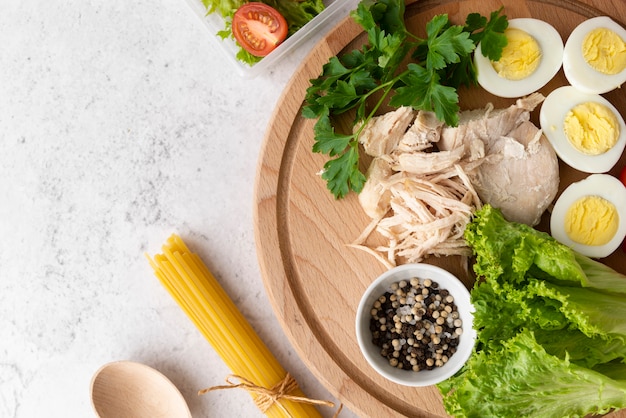rice noodles hold a special place in my heart. Their versatility is unmatched, starring in everything from comforting soups to vibrant salads. But let's face it, we've all had those soggy, mushy noodle mishaps. I’ve definitely been there, staring at a plate of sad, overcooked noodles, wondering what went wrong. But trust me, once you crack the code to cooking perfect rice noodles, it's a game-changer.
This article is your guide to mastering the art of cooking rice noodles. We'll dive into choosing the right noodles, explore the essential prep steps, and unveil the secrets to achieving that perfect texture – tender, chewy, and absolutely delicious. We'll also look at common mistakes to avoid, storage tips, and even sprinkle in a few of my favorite recipes to inspire your culinary creativity. So grab your chopsticks, get ready to learn, and let's make some truly amazing noodles together.
Part 1: choosing the right rice Noodles - A Noodle Odyssey

The first step on this noodle journey is choosing the right rice noodles. With so many varieties, it can feel overwhelming. But fret not! Let's navigate this noodle maze together.
Unveiling the Noodle Family
Rice noodles come in a wonderful array, each with its own unique personality. Here are some of the most common varieties:
- Flat Rice Noodles (Banh Pho): These are the stars of Vietnamese pho. Thin, flat, and slightly chewy, they soak up the broth beautifully, making them ideal for soups and noodle salads.
- Round Rice Noodles (Vermicelli): These thin, round noodles are quick-cooking and a staple in Thai and Vietnamese cuisine. They're perfect for stir-fries, salads, and even adding a delightful texture to soups.
- Thick Rice Noodles (Wide Rice Noodles): Think of these as the hearty members of the noodle family. Wider and thicker than vermicelli, they have a substantial texture and hold their own in stir-fries and curries.
- Rice Paper Rolls: These aren't technically cooked, but they are soaked in water to become pliable before being rolled into fresh, delightful spring rolls.
Selecting the Perfect Noodle for Your Dish
Here's how to choose the right noodle for your culinary masterpiece:
- Match the Noodle to the Dish: Imagine your dish. For a light, refreshing salad, thin vermicelli noodles are your best bet. But if you're creating a hearty stir-fry, thick noodles will stand up to the flavors and provide a satisfying chew.
- Read the Package Like a Recipe: Each brand of rice noodles has its own quirks. Don't skip the instructions! They'll tell you the ideal cooking time, water ratio, and even preparation tips. It's like a little secret recipe just for your noodles.
- Seek Freshness: If possible, opt for fresh rice noodles over dried. They generally have a better texture and flavour, offering a more authentic noodle experience.
Part 2: Preparing for Noodle Success

Now that you've chosen your perfect noodles, let's get ready for the cooking stage. It's like prepping for a noodle adventure! Every step counts, and each action contributes to that amazing final outcome.
Prepping the Noodles: A Gentle Touch
Before the boiling water even makes an appearance, we need to give our noodles a little TLC.
- Rinse, Rinse, Rinse: Rinse your noodles under cold running water to remove excess starch. This prevents them from sticking together and ensures even cooking. I always do this, even if the package doesn't specify it. It's like giving them a refreshing shower before their big cooking debut.
- Soak if Necessary: Rice paper rolls, for example, need a soaking in water before use. This softens them and makes them pliable for rolling. Check the package for the soaking time – it varies depending on the noodle type.
Getting the Water Ready: It's All About the Boil
The water we use to cook our noodles is just as important as the noodles themselves. It's a foundation for flavour and texture.
- Plenty of Water: Don't be shy! Use a large pot and fill it about two-thirds of the way with water. This ensures enough space for the noodles to move freely and cook evenly. No overcrowding allowed!
- A Raging Boil: Don't even think about adding your noodles until the water is bubbling furiously. This quickens the cooking process and helps prevent mushy noodles. Adding noodles to cold water is a culinary no-no – trust me, I've learned the hard way!
Part 3: The Art of cooking rice noodles

Alright, the stage is set. It's time to cook those noodles! This is where technique and precision meet. You want that perfect balance of tenderness and chewiness.
The Golden Cooking Time
The cooking time for rice noodles varies depending on the type. The package instructions are your noodle bible – follow them religiously! But here are some general guidelines to get you started:
- Thin Vermicelli Noodles: These quick cooks are ready in just a few minutes. Keep a watchful eye! They're done when they're translucent and have a slight springiness. Overcooking will turn them into a mushy mess, and we don't want that!
- Flat Rice Noodles: These take a bit longer – usually about 5-7 minutes. They're ready when they're soft and pliable, but still hold their shape. Overcooked flat noodles will lose their structure and become mushy. I've learned this the hard way with my pad see ew!
- Thick Rice Noodles: These need a good amount of time – about 8-10 minutes. They're done when they're soft but still have a satisfying bite. Overcooked thick noodles become tough and chewy, which is a far cry from the delightful texture we're aiming for.
Tips for Noodle Perfection: The Art of the Noodle
Here are some tips to make sure your noodles achieve their full potential:
- Give Them Room to Breathe: Don't crowd the pot! Overcrowding leads to uneven cooking and sticky noodles. Give them plenty of space to dance in the boiling water.
- Gentle Stirring: Stir your noodles gently and occasionally while they're cooking. This prevents sticking and ensures even cooking. You don't want to break them, just a little nudge to keep them moving in the water.
- The Noodle Test: Once the recommended cooking time is up, use chopsticks or a fork to check for doneness. They should be translucent and have a slight springiness. You can also give them a taste test. They shouldn't be too firm or too soft. That's the noodle sweet spot!
Part 4: Draining and Serving – The Finishing Touches
The noodles are cooked! It's time to drain them, but not just any ordinary draining. We want to preserve that perfect texture and get them ready for their culinary debut.
Draining with Care: The Noodle Rescue
Speed and efficiency are key to draining rice noodles. You want to remove them from the heat and cool them down quickly to avoid overcooking.
- Colander Central: Use a colander big enough to hold all the noodles. A small colander can lead to overcrowding, which can make the noodles stick together. Think of it as a noodle lifeboat, ensuring a smooth transition from the pot to the next stage.
- Immediate Action: Don't delay! Drain those noodles as soon as they're cooked. Leaving them in the boiling water for too long will result in mushy noodles. It's like a race against time – you want to rescue those beautiful noodles from the heat.
- Cold Water Rinse (Optional): Some folks prefer to rinse their noodles under cold water after draining. This stops the cooking process and cools them down quickly. I usually do this if I'm making a cold noodle salad – it adds a refreshing touch.
Serving Up Noodle Glory: The Final Act
The moment you've been waiting for! Your perfectly cooked noodles are ready to be transformed into a delicious dish. Here are some serving ideas to get those culinary juices flowing.
- Sauce-tastic: Rice noodles love a good sauce! Peanut sauce, sweet chili sauce, soy sauce, fish sauce – the options are endless. Experiment and find your perfect sauce match.
- Vegetable Medley: bell peppers, onions, carrots, broccoli – vegetables add color, texture, and flavor to your noodle creations. I love to add fresh herbs like cilantro, basil, or mint for a vibrant touch.
- Protein Power: Chicken, beef, tofu, shrimp – add a protein punch to your noodles for a more filling meal. A fried egg on top is a delightful addition for extra richness and flavour.
Part 5: Avoiding the Noodle Pitfalls
Now that you're armed with knowledge, let's talk about common pitfalls to avoid. We all make mistakes, and I've certainly made my share of noodle mishaps. But I'm here to share my hard-won wisdom.
The Overcooked Noodle: A Mushy Disaster
Overcooked rice noodles are a culinary crime! They lose their texture and become mushy. To avoid this, cook them for the recommended time. It's better to err on the side of undercooking, as you can always cook them a bit longer if needed. Fixing undercooked noodles is much easier than rescuing overcooked ones.
The Undercooked Noodle: A Chewy Challenge
On the opposite end of the spectrum, undercooked noodles are tough and chewy. A definite no-no! Follow those package instructions, and remember, even a little extra cooking time is better than undercooking.
The Sticky Noodle Syndrome: A Starchy Struggle
Not rinsing your rice noodles before cooking can lead to a sticky, clumpy mess. Rice noodles contain starch, which can turn gummy if not rinsed off. It's a simple step, but it makes a huge difference in texture.
Not Enough Water: A Noodle Fiasco
Not using enough water during cooking can also result in sticky noodles. They need enough space to move around and cook evenly. Always use a large pot and fill it generously with water. Remember, it's better to have too much water than not enough!
Neglecting the Stir: A Noodle Tragedy
Not stirring your noodles during cooking can cause them to stick to the bottom of the pot and cook unevenly. A gentle stir every now and then ensures even cooking and a lovely, smooth texture.
Part 6: Storing Rice Noodles for Future Noodle Adventures
You've cooked your perfect noodles, but what about those leftovers? Storing them correctly is crucial to maintaining their quality.
Storing Dried Rice Noodles: A Noodle Pantry
Store dried rice noodles in an airtight container in a cool, dark place. They should last for several months if stored properly. My pantry is the perfect spot, away from direct sunlight and heat. It's like a noodle haven!
Storing Cooked Rice Noodles: Noodle Preservation
Cooked rice noodles are best enjoyed fresh, but if you need to store them, they can last in the refrigerator for up to 3 days. Longer storage can make them mushy and lose their texture.
- Airtight Container: Store your cooked noodles in an airtight container. You can keep them in the cooking water or toss them with a light sauce or oil to prevent sticking. I love to add a touch of sesame oil or soy sauce – it keeps them moist and adds flavour.
- Gently Reheat: When you're ready to eat, reheat your noodles gently in the microwave or in a pan over low heat. I prefer to reheat them in a pan with a little broth or sauce to keep them moist and boost the flavour.
Part 7: Recipe Inspiration: A Noodle Feast
Let's get your noodle creativity flowing! Here are a few of my favorite recipes to get you started. Whether you're a noodle newbie or a seasoned pro, these recipes are easy to follow and absolutely delicious.
1. Vietnamese Pho with Chicken and Basil
This classic Vietnamese soup is both comforting and flavorful. It features a flavorful broth, thin rice noodles, tender chicken, and fresh basil. The broth is the key – it should simmer for several hours to develop its rich, aromatic flavour. It's a perfect meal for any occasion, especially when you're looking for something warm and satisfying.
2. Thai Pad See Ew with Tofu
A vegetarian delight, Pad See Ew is a must-try for any rice noodle enthusiast. Flat rice noodles are stir-fried with tofu, vegetables, and a sweet and savory sauce. It's quick and easy, and you can customize it with different vegetables and sauces to make it your own.
3. Chinese Stir-fried rice Noodles with Shrimp
This classic Chinese dish features wide rice noodles cooked with shrimp, vegetables, and a flavorful sauce. It's a perfect quick and easy meal for a busy weeknight. The key is a thick, flavorful sauce and noodles cooked to that perfect slightly chewy texture.
4. Fresh Spring Rolls with Peanut Sauce
These light and refreshing spring rolls are perfect as an appetizer or lunch. Rice paper wrappers are filled with fresh vegetables, rice noodles, and then dipped in a delicious peanut sauce. The secret to perfect spring rolls is soaking the rice paper wrappers in water until they're pliable, but not too soggy. It's a fun and refreshing way to enjoy rice noodles.
Part 8: FAQs: Noodle Wisdom Revealed
I know you might still have questions. Here are answers to some of the most frequently asked questions about cooking rice noodles.
1. Can I cook rice Noodles in the Microwave?
While it's possible to cook rice noodles in the microwave, it's not the ideal method. microwave cooking can make them mushy and unevenly cooked. Stick to the stovetop for the best results! If you do decide to microwave them, use a microwave-safe dish and cook in small batches for even cooking. Check the package instructions – they might have some microwave tips.
2. Can I Substitute Rice Noodles for Other types of noodles?
It depends on the dish. If you're making a soup or salad, you can often swap rice noodles for other types of noodles, like spaghetti or linguine. But if a recipe specifically calls for rice noodles, it's best to stick with them for the best flavour and texture. Rice noodles have a unique character that's hard to replicate.
3. How Do I Keep Rice Noodles from Sticking Together?
Rinsing before cooking is key! It removes excess starch, which is the culprit behind sticky noodles. Use enough water to give them space to move around, and stir them occasionally to prevent sticking. Adding a little oil or sauce after draining can also help keep them separate. I usually add a splash of sesame oil or soy sauce – it keeps them moist and adds flavour.
4. Can I Use Rice Noodles for Desserts?
Absolutely! Rice noodles are traditionally used in savoury dishes, but they can be just as delicious in desserts. Think rice noodle pudding, rice noodle cakes, and even rice noodle ice cream. Get creative with flavours and textures! Add fruit, chocolate, or nuts – the possibilities are endless.
5. How Can I Make My rice noodle dishes More Flavorful?
There are so many ways to add flavour! Start with a delicious sauce or broth. Experiment with peanut sauce, sweet chili sauce, soy sauce, fish sauce – the options are endless. Add vibrant vegetables, like bell peppers, onions, carrots, and broccoli. Don't forget protein! Chicken, beef, tofu, shrimp, and eggs are all great options. And a sprinkle of fresh herbs, like cilantro, basil, or mint, can really elevate the flavour.
I hope this guide has equipped you with the knowledge and inspiration to cook perfect rice noodles every time. Now go forth and experiment! Don't be afraid to try new things, and most importantly, have fun in the kitchen. Happy noodle making!
Everyone is watching

Corn on the Cob: The Ultimate Guide to Perfectly Cooked Ears
Healthy MealsAh, corn on the cob. Just the name evokes images of sunny days, barbecues, and that sweet, juicy flavour that ...

Perfect Pork Roast Oven Cooking Time: A Guide to Delicious Results
Healthy MealsThere's something truly satisfying about a perfectly roasted pork. The aroma alone is enough to make your mout...

Ham Cooking Time: How Long to Bake, Smoke, or Boil a Delicious Ham
Healthy MealsAh, ham. It's a classic, isn't it? A real crowd-pleaser, especially around holidays. And when done right, it'...

Scallops: The Ultimate Guide to Perfect Cooking
Healthy MealsAh, scallops. Those delicate, sweet, and utterly delicious morsels of the sea. They hold a special place in my...

Spaghetti Squash: The Ultimate Guide to Cooking and Serving
Healthy MealsRemember that time you saw spaghetti squash at the supermarket, looking all bumpy and strange, and thought, "W...
